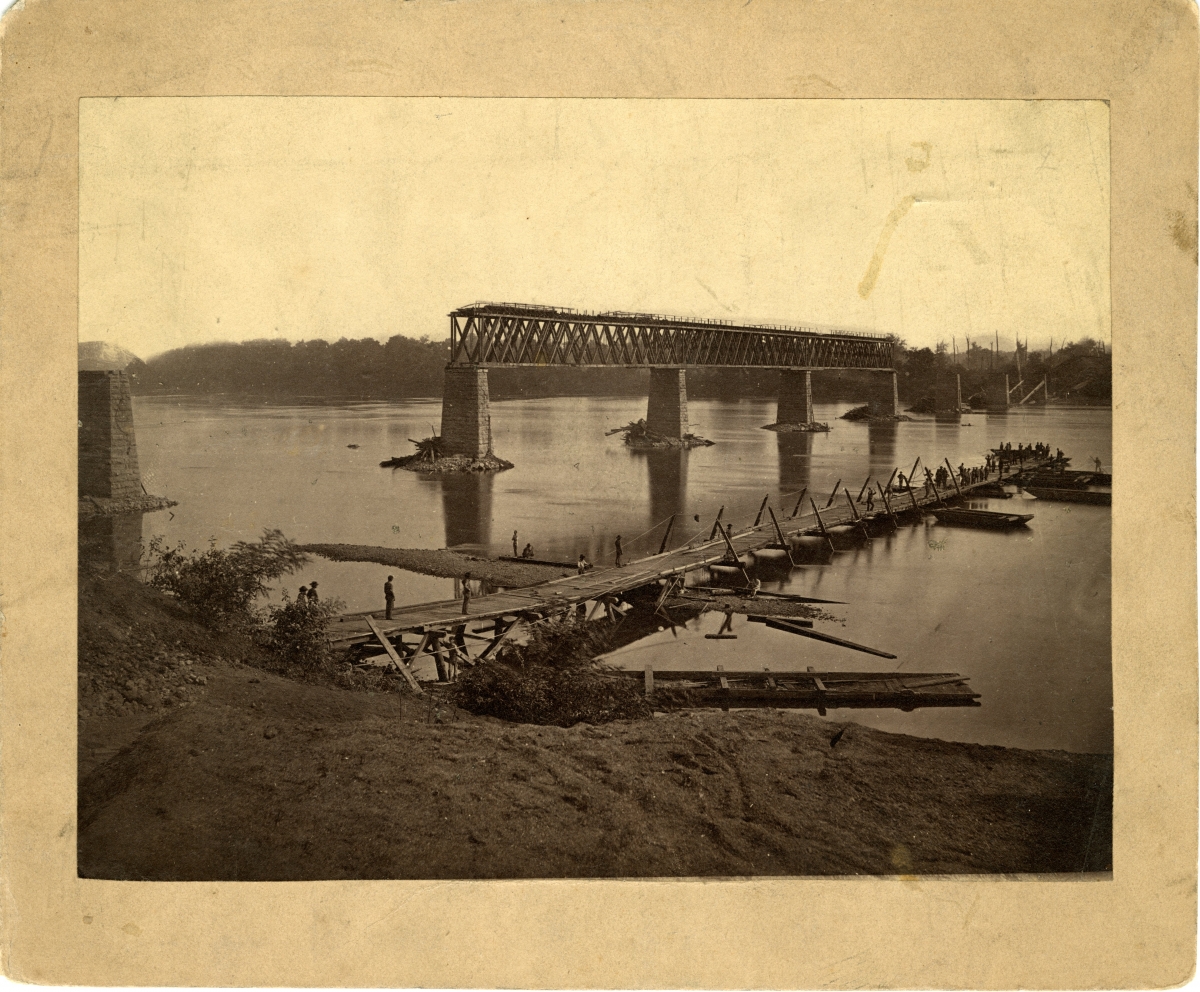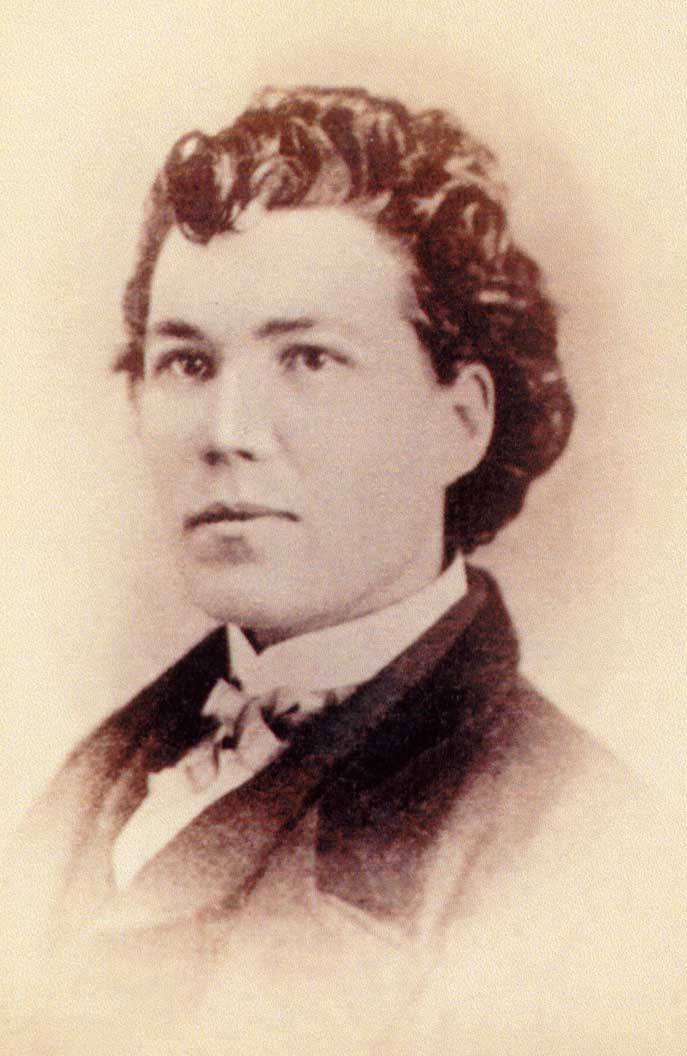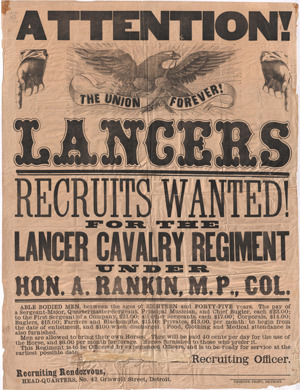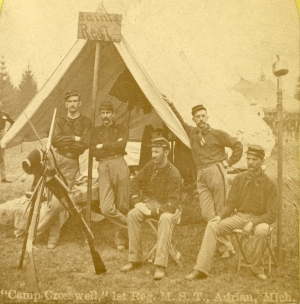Michigan in the Civil War
“Get me a Michigan Regiment… quick!” –General Philip Kearny
Although no battles occurred on state soil, Michigan residents played a crucial role in the American Civil War, from the first shots at Fort Sumter, South Carolina until the final surrender at Appomattox Courthouse, Virginia. Not all Michiganders were in favor of going to war, but when the war came, thousands of Michigan men and women willingly stepped forward to help secure the Union.
This traveling exhibition from the Detroit Historical Society features 10 free-standing kiosks, each of which examines a different theme regarding Michigan’s role in the war. Over 60 artifacts and photos give the visitor insight into the ordinary and extraordinary lives that helped shape the history of the United States.
The 10 kiosks of Michigan in the Civil War each feature a different theme:
- Michigan in the Civil War
Governor Austin Blair ensured Michigan contributed more than its fair share to the Union cause, securing the state’s lasting Civil War legacy. - Women in the Civil War
While they couldn’t be soldiers, Michigan women fought hard on the home front, and sometimes on the front lines. Be it as a nurse, spy or business owner, the roles women played were critical to the war effort. - The Iron Brigade: MI 24th Infantry
The stalwart soldiers of the Michigan 24th Infantry suffered more losses than any regiment at the Battle of Gettysburg, but were instrumental in stopping the northward Confederate advance. - Unsung Heroes: Engineers and Mechanics
The 1st Michigan Engineers and Mechanics waged war by building up Union infrastructure, and sabotaging that of the Confederacy. - The Civil War in the News
Advancements in printing technology, the electric telegraph and special correspondents allowed news of the war to reach home faster than ever before. - A Soldier’s Life
The 90,000 Michigan men who served in the Civil War sought to maintain some semblance of their life at home. Games, instruments and letters were invaluable during the countless hours of camp life. - United States Colored Troops
Though unable to enlist at the beginning of the war, African American soldiers composed about 10 percent of entire Union army by the war’s end. Some gave up their safety in Canada to return and fight. - The Music Makers
Music was an indispensable tool for both the Union and Confederate Armies. It was integral to boosting morale and issuing orders in the din of battle. - Post War: the Grand Army of the Republic
Camaraderie flourished at local G.A.R. posts, where veterans could catch up with fellow soldiers. The group became a massive political influence in the years following the Civil War. - Monuments to the Civil War
The Civil War had a profound effect on the nation, and it is remembered in many ways, including the monuments erected in communities across the country.
Exhibit Specifications
Space: Full exhibition takes up 200~400 sq. ft. based on configuration.
Dimensions:
- Kiosk base – 43” x 24” x 8”
- Glass panel height – 70”
- Intro kiosk banner height – 75.75”
Loan fee:
- Full exhibition - $2,250 /per 3 months
- Partial Exhibition – Price to be determined based on quantity of kiosks being rented. $350 per kiosk/ per 3 months.
For more information, or to schedule a rental, please contact:
Jeremy Dimick
Manager of Collections
jeremyd@detroithistorical.org
313.297.8391
or
Bill Pringle
Curatorial Assistant
billp@detroithistorical.org
313.297.4102





